This post may contain affiliate links. Please read our disclosure policy.
How to make almond milk with just 2 ingredients in 10 minutes. It’s dairy-free, gluten-free, vegan, whole30, and free from gums and emulsifiers – perfect for coffee, cereal, baking, etc. Flavored options included!
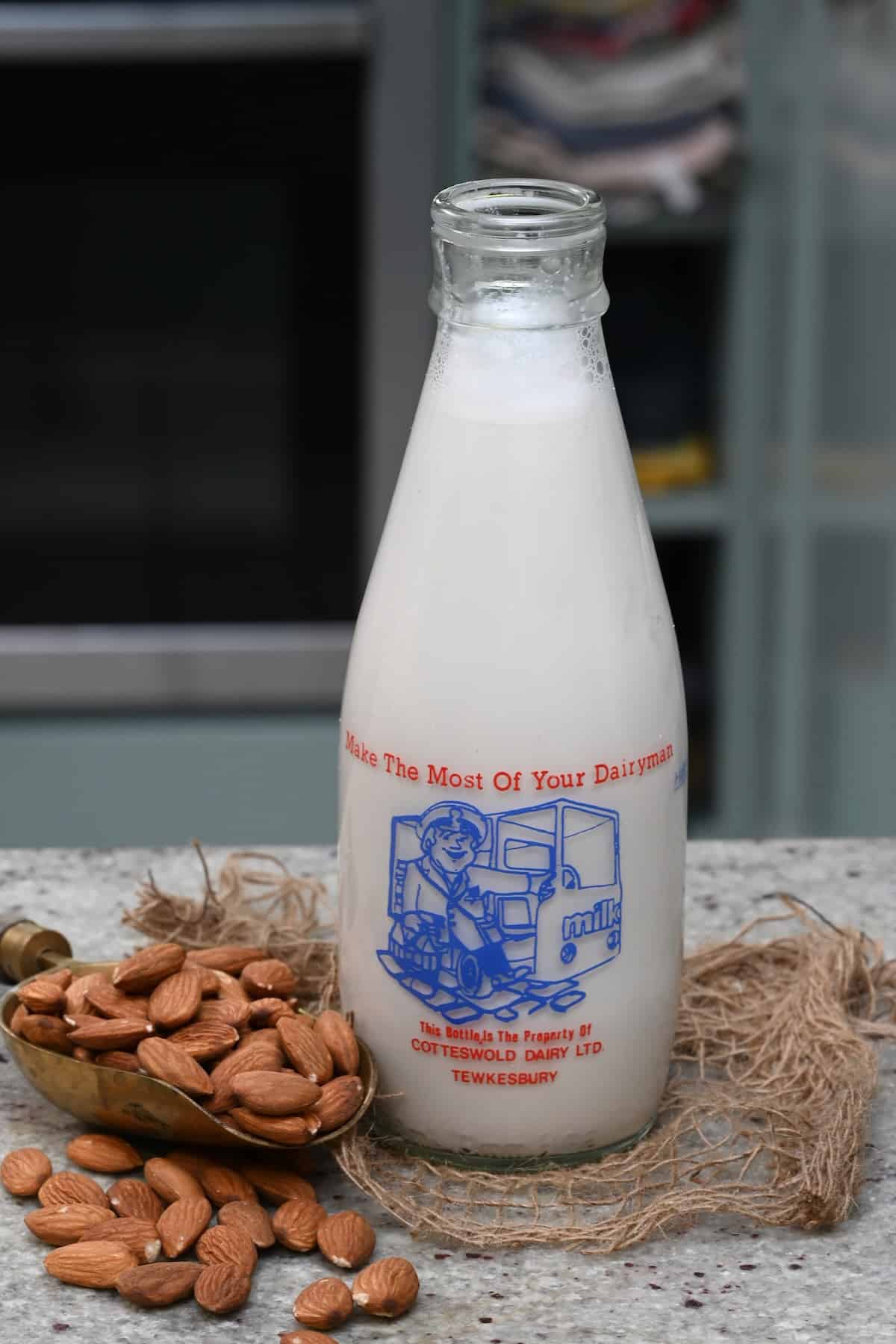
Homemade plant-based, dairy-free milk has become a staple in my kitchen for several years. As convenient as it is to buy a carton, the best homemade almond milk is also cost-effective, can easily be naturally flavored, and is really simple to prepare. And you are 100% in control of the ingredients, which means no unwanted additives, thickeners, gums, or stabilizers.
Plus homemade tastes so much better than store-bought almond milk! Just blend soaked almonds with water until creamy, and voila – a dairy-free, plant-based milk alternative that is wonderfully creamy and nutty. As an added bonus, almonds are a great source of heart-healthy fats and contain plant-based protein, antioxidants, vitamins, minerals, and more.
So let’s dive right into making homemade almond milk!
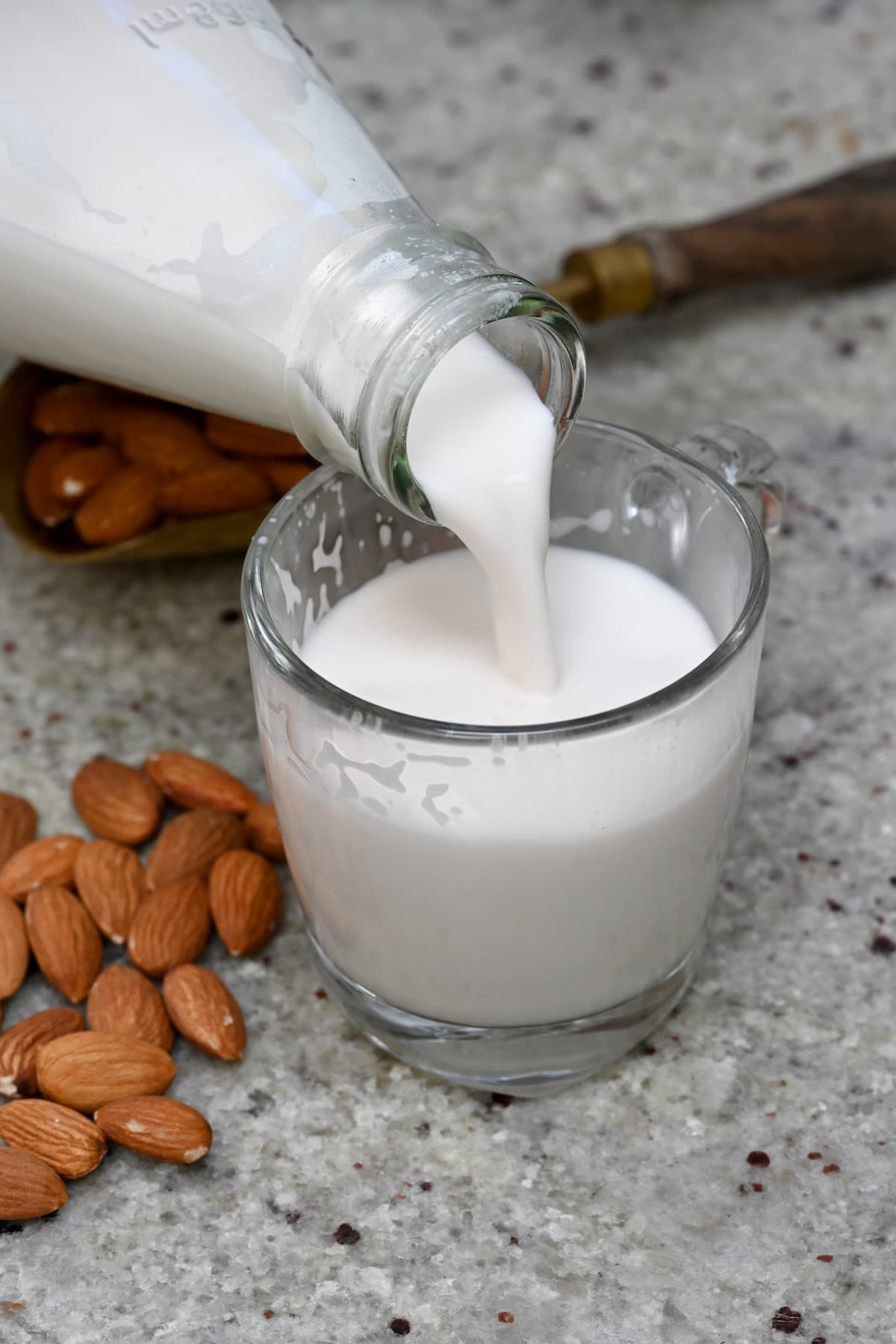
Want to save this recipe?
Almond milk ingredients
There are just three ingredients and one is optional!
- Almonds: It’s best to use raw, unsalted almonds. In a pinch, you could use unsalted roasted almonds, though it won’t be as creamy, and you’ll end up with more pulp.
- Water: I like to use filtered water, but you can use tap water (if safe) too.
- Sea salt: (Optional) A pinch of sea salt will enhance the flavor.
FUN FACT: If you don’t have raw almonds, you can still make a quick almond milk in 2 minutes: no prepping, no straining, no waste! How? you ask…
– All you need is 1 Tbsp of almond butter per 1 cup of water.
– Blend both ingredients in a high-speed blender for between 40-60 seconds until creamy and thoroughly incorporated – voila!
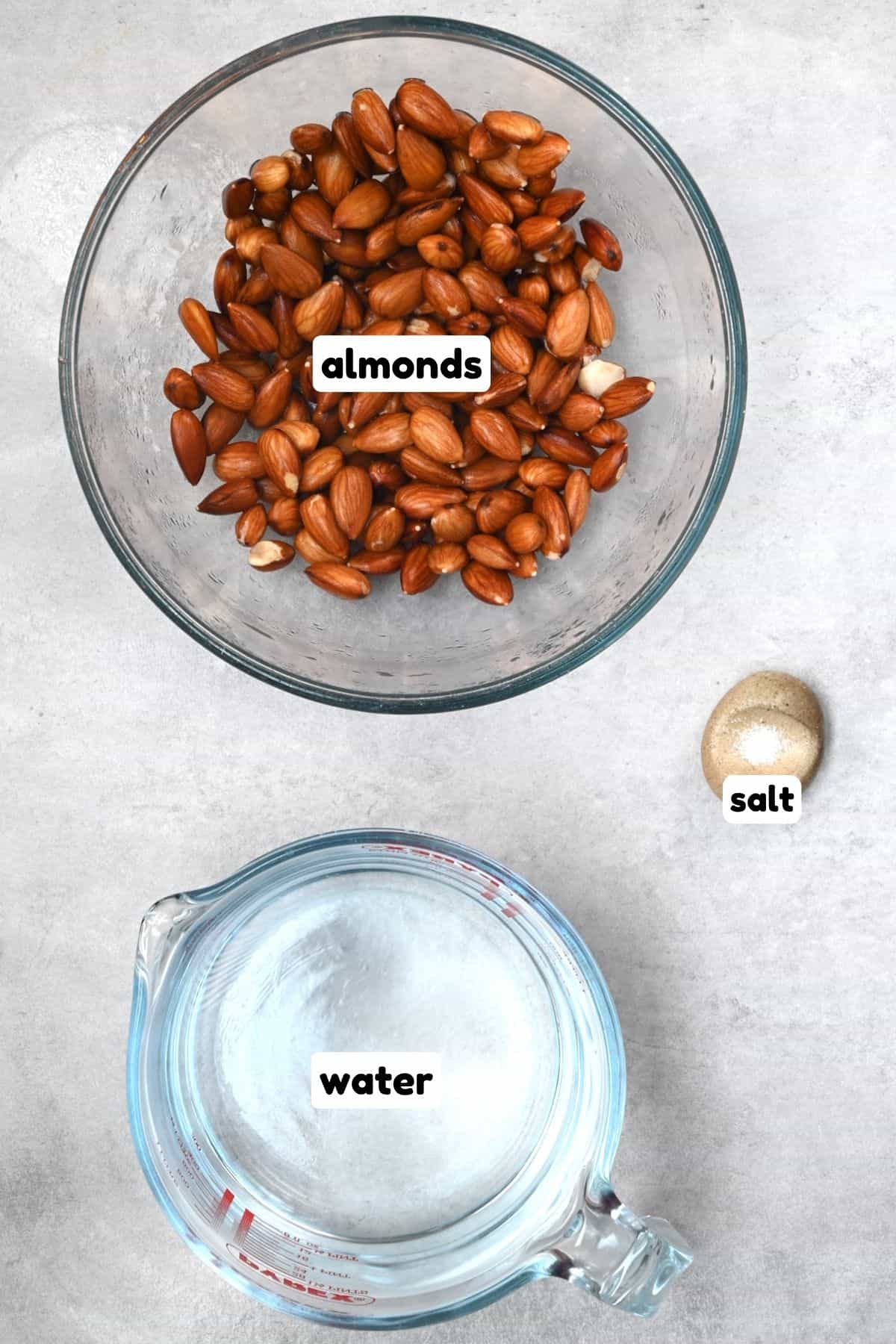
How to make almond milk
Soak
First, leave the almonds to soak in a large bowl covered with cold/room-temperature water for 8-12 hours. This step is necessary because soaking the nuts makes them easier to blend and more easily digestible. Plus, the antinutrients within (like phytic acid) are neutralized for higher nutrient absorption.
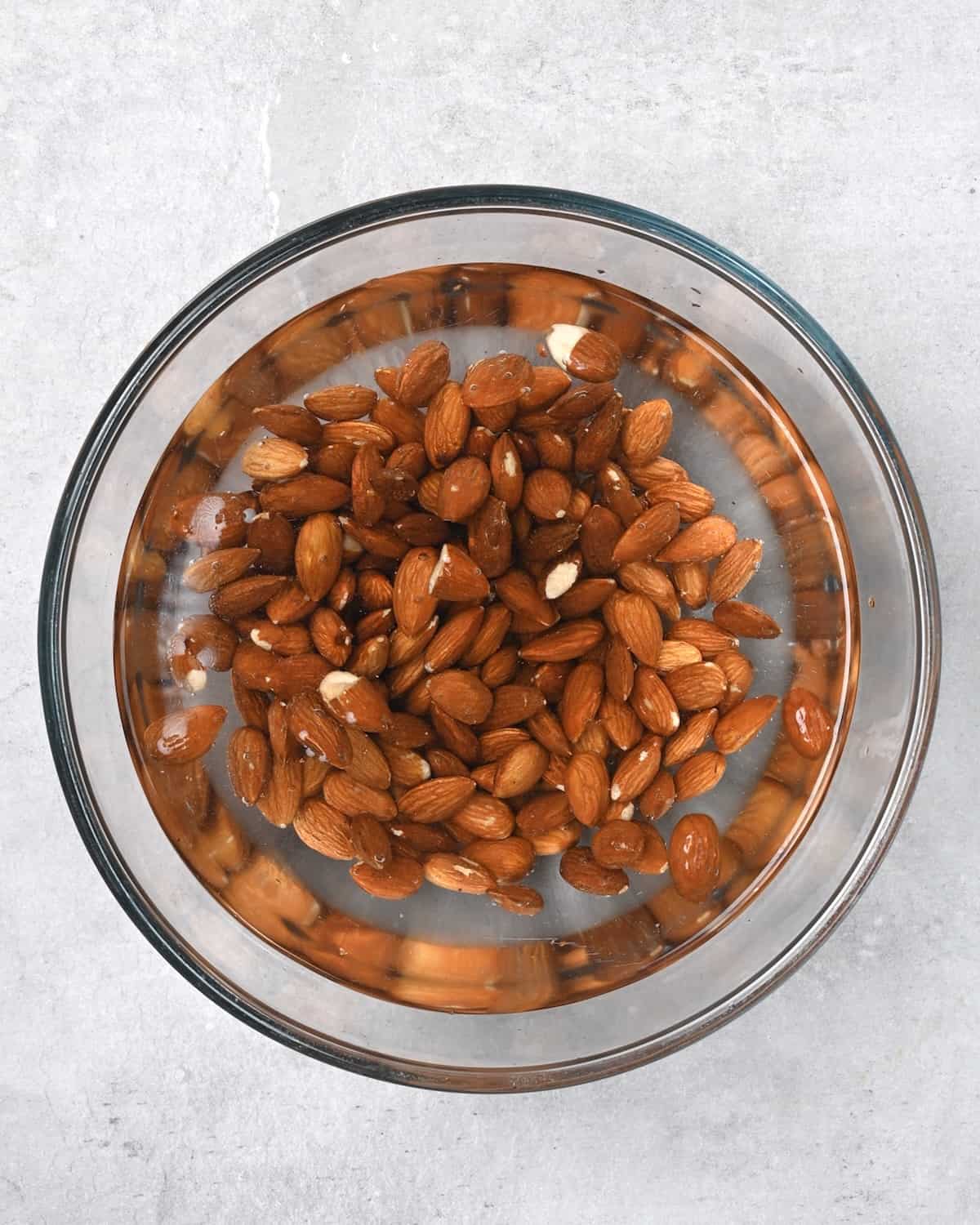
Optionally add a teaspoon of salt (to help “activate” the nuts and further neutralize the enzyme inhibitors). Alternatively, do a “quick soak” by leaving them in hot water for 3-4 hours (no salt needed).
Blend
After soaking, drain and rinse the nuts. Transfer them to a high-speed blender. Add fresh water and blend until it’s creamy and milky (usually a couple of minutes in a high-speed blender).
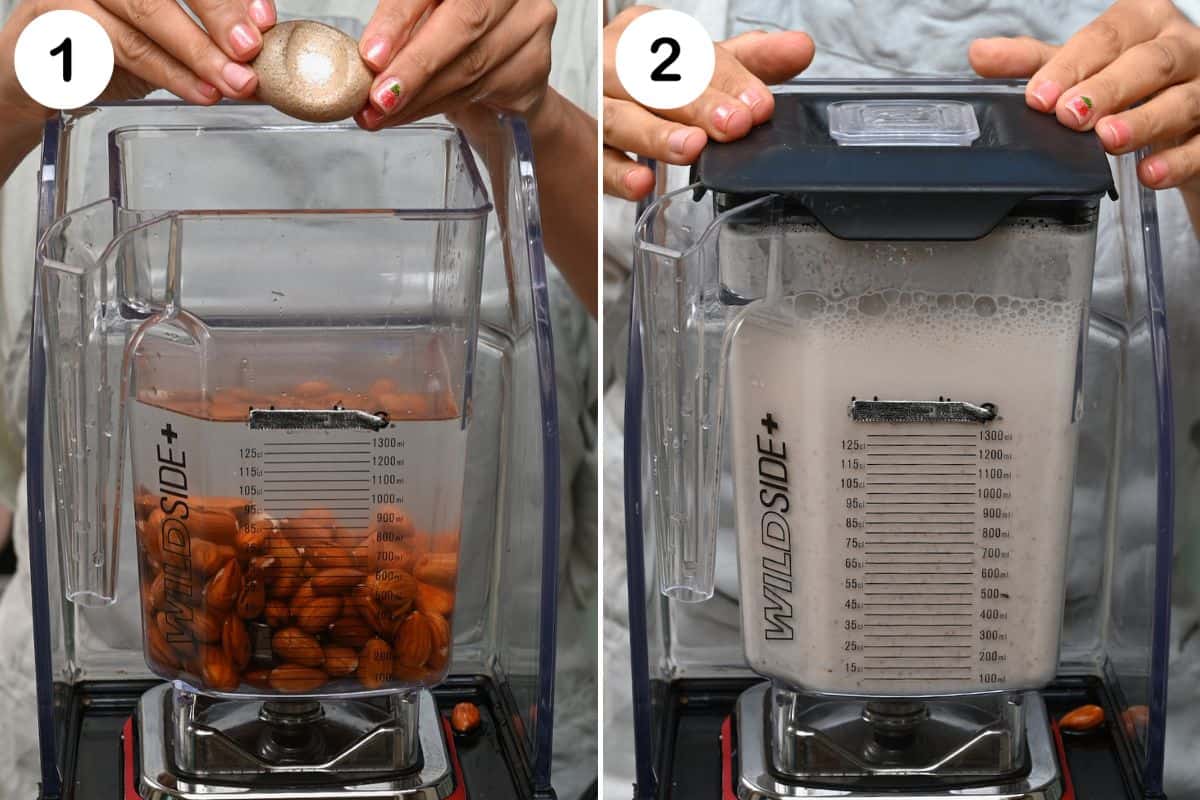
Strain
Finally, pour the almond milk mixture through a nut milk bag (or layers of cheesecloth within a fine-mesh strainer) to strain any remaining pulp/solids. Squeeze well to extract as much liquid as possible. Enjoy it immediately or funnel it into a glass bottle!
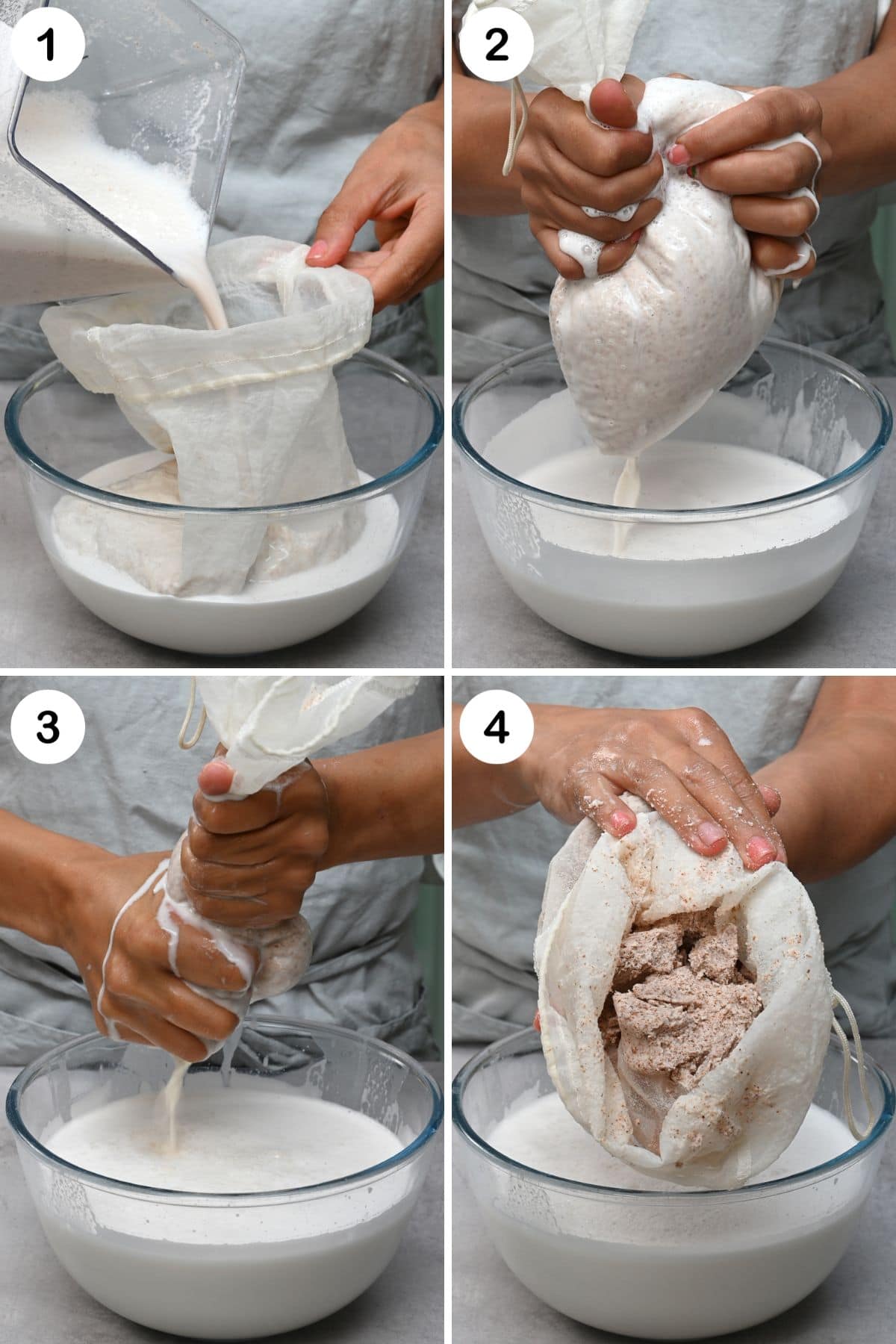
How to flavor
Almond milk has a slightly nutty but mild flavor that pairs well with many ingredients. Add your extras when blending and then strain, as usual.
- Sweetened: Add 1 Tbsp maple syrup/agave/honey OR 2 Medjool dates (or date paste).
- Vanilla almond milk: Sweeten and add around 1 tsp of vanilla extract or powder.
- Chocolate: Add 2 pitted Medjool dates, 1/2 Tsp vanilla extract & 1 Tbsp cacao/cocoa powder.
- Strawberry: Add 2 pitted Medjool dates, 1 Tsp vanilla extract & 1 cup fresh strawberries (or other berries).
- Spiced: combine sweetener with cinnamon, nutmeg, pumpkin spice, etc. – to taste.
- Almond golden milk: Add golden spice or golden paste.
Ways to use almond milk
You can enjoy this DIY almond milk in many of the same ways as regular dairy milk:
- As the liquid base for smoothies and smoothie bowls,
- In coffee, iced coffee, tea, or hot chocolate,
- With cereal and granola,
- Use for oatmeal or overnight oats,
- To make chia pudding,
- In baking – to make batter for cakes, pancakes, etc.,
- Add it to sauces and soups,
- To drink as is – either plain or flavored.
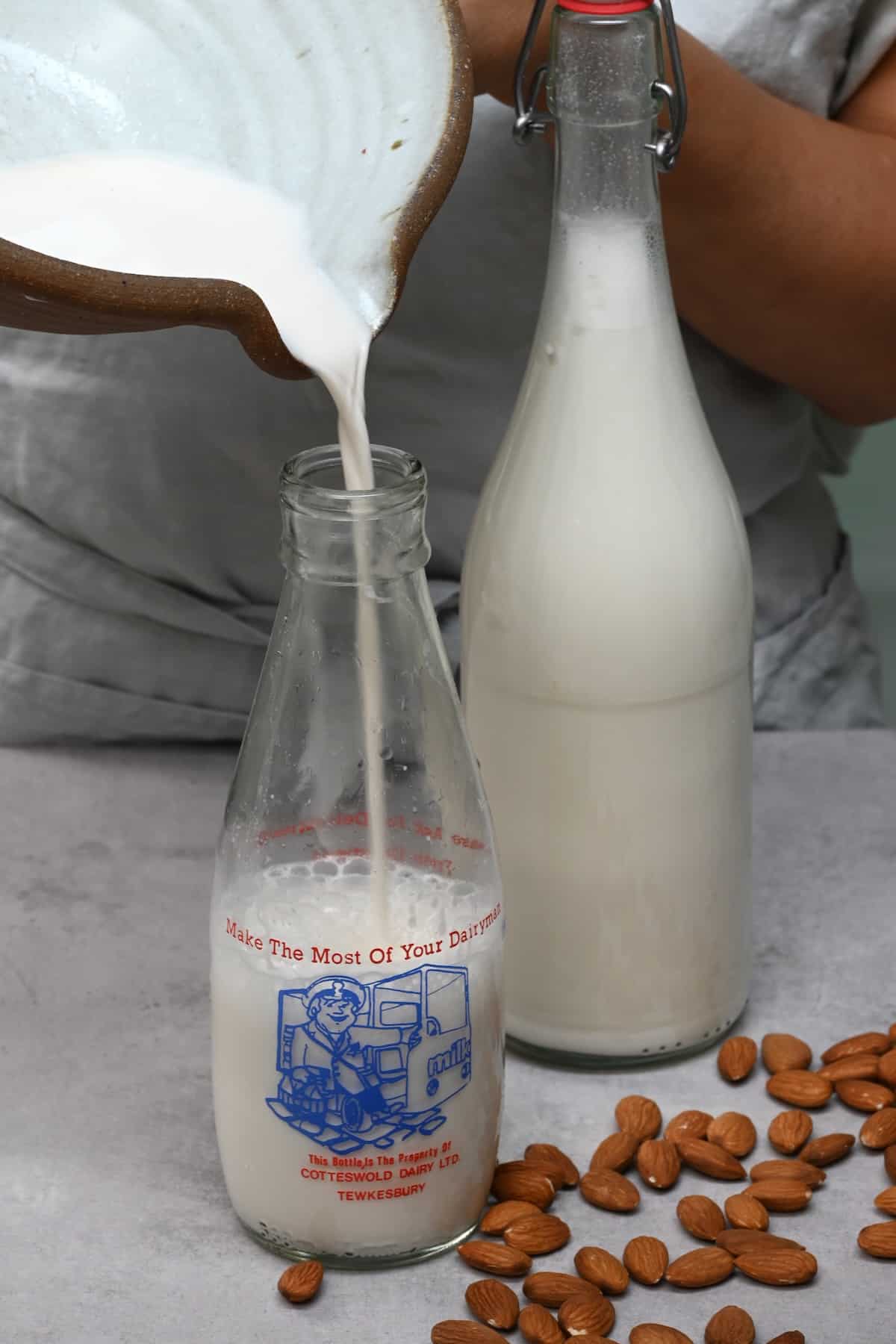
What do you do with almond pulp
There are plenty of ways you can use the leftover almond pulp:
You can also dry it out in the oven at 200ºF/90ºC (usually for between 1 ½-2 hours) and use it as-is or blend it into almond flour/almond meal to:
- Add to homemade granola,
- Use in baking (quick bread, brownies, cookies),
- Make energy balls or bars,
- Use in raw tart bases – like this no-bake earl grey blueberry tart.
Storage instructions
Refrigerate: Store it in an airtight, sterilized bottle in the refrigerator for 4-5 days. If it has a sour smell and taste, it’s gone bad.
It’s important to shake it each time before using it, as the lack of stabilizers means the drink separates as it sits in the fridge.
Freeze: I like to freeze mine in ice-cube trays so it’s “portioned” and I can pop a few cubes out, as needed. Freeze for up to 3 months.
Chef’s Tip: If you want to heat almond milk, make sure to do so slowly over low-medium heat. Stir often so it doesn’t come to a boil. This will prevent it from curdling.
Other nut milk recipes
If you try this recipe, let me know how it goes in the comments below. I’d appreciate a recipe card rating and would love to see your recipe recreations – tag me on Instagram @Alphafoodie!
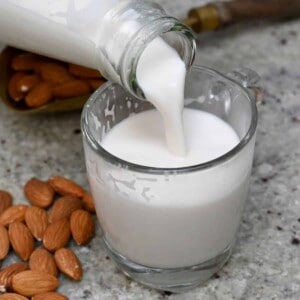
How to Make Almond Milk at Home
Ingredients
- 1.5 cup almonds raw unsalted
- 4 cups water filtered or tap if safe to drink
- 1/8 tsp sea salt optional
Instructions
- Leave the almonds to soak in a large bowl covered with cold/room-temperature water for 8-12 hours. You need 4 cups of tap water for soaking them.Optionally add a teaspoon of salt (to help "activate' the nuts and further neutralize the enzyme inhibitors in nuts. Alternatively, do a "quick soak" by leaving the nuts in hot water for 3-4 hours (no salt needed).
- After soaking, drain and rinse the nuts.If you don't use salt, you can use the soaking liquid to water plants. Don't drink it!
- Transfer the almonds to a high-speed blender. Add fresh water and blend until it's creamy and milky (usually a couple of minutes in a high-speed blender).
- Pour the mixture through a nut milk bag (or layers of cheesecloth within a fine-mesh strainer) to strain out any remaining pulp/solids. Squeeze well to extract as much liquid as possible.
Storage Info
- Store: Store it in an airtight, sterilized bottle in the refrigerator for 4-5 days.It's important to shake it each time before using it, as the lack of stabilizers means the drink separates as it sits in the fridge.Freeze: I like to freeze mine in ice-cube trays, so it's "portioned", and I can pop a few cubes out, as needed. Freeze for up to 3 months.
Video
Notes
- For “regular” milk (like 2% milk): Use ONE cup of almonds + FOUR cups of water.
- Creamier (like half and half): Use ONE cup of almonds + THREE cups of water.
- Light, subtle milk: Use ½ cup almonds + FOUR cups of water. It will be slightly creamy but with a milder, more watery flavor/consistency.
Nutrition
Nutrition information is automatically calculated, so should only be used as an approximation.

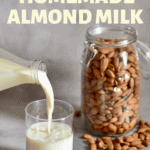
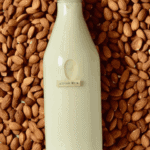
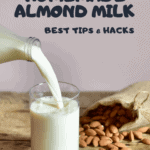
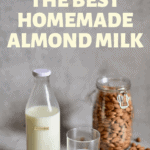
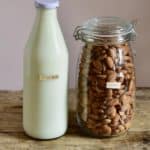
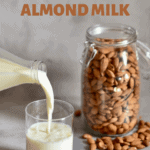
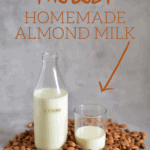
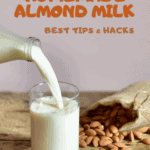
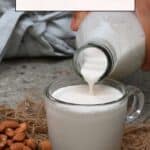
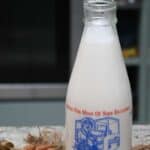
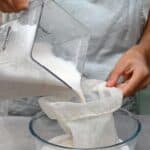
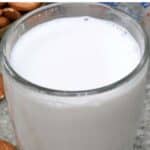









When I saw this and other nut milks and butter recipes on your blog I was amazed! I bought the NutraMilk after I saw you using it on your IG for so many recipes, and I’ve been using it so much!
Thank you for showing us not only great recipes but also awesome tools. I know it is not essential to make almond milk, but I’ve really been using it for making so many nut butters and milks in so little time.
I made almond milk yesterday night, and I think I’ll never buy it from stores, ever again!
Hi, love your blog.
I’ve been experimenting with non dairy milks for a while. I love the simplicity if your recipe. My question is why is it necessary to drain the soak water?
Hi Joseph,
Thank you! You don’t have to drain the water, but you will see after soaking it that the water isn’t very clean. Nuts are usually covered in dirt, tannins, and unwanted chemicals and acids that might be lingering on the surface.
This will make sure there are no pesticides or any of these nasty residues in the milk. That’s why I recommend draining the soak water. I hope this helps.
Hi Samira,
Your recipe looks great! I only have a food processor. Can I use that instead, or do I have to use a blender? Thank you!
Hi Andrea,
Thank you, of course you can use food processor. It will work perfectly fine! Just use a cheesecloth to filter the pulp out. You can dry the leftover and use in baking or freeze in an ice cube tray to use in smoothies, oatmeal etc. Also you can add sweeteners or spices etc.
Delicious!
Hi!
Love your little super machine! Question: how do you calculate the nutrition info? Do you subtract the amount of pulp from what you started with?
Thanks!
Hi Vanessa,
Thank you so much for your comment.
The nutritional information is calculated with an online database and, even though I provide accurate metrics, these figures should be considered only as estimates. Also, the nutritional info will vary a bit depending on which method for making the milk is used. While my machine leaves very little pulp, if I was to sieve the liquid through a nut milk bag, there would be more pulp left. I hope this helps.
Thank you!
I absolutely love your website Samira. It makes me want to continue to cook healthy and delicious recipes for my family. That’s it. Just wanted to say thank you.
Hi Celina, you’re so so very kind, thank you so much for your feedback, it means so much to me. Sending lots of love x
What is the make and model of the blender you have?
Hi Carolyn,
I often use my Blendtec but any blender can work for this recipe.
Hey whats the brand for mixy that u used? Plz mention it looks nice
Hi Noorie,
I’ve linked the mixer on my shop page, it’s from nutramilk!
hi!
I wonder what blender do you use, it’s so useful
thanks!
Hi Tasha,
I’ve added the links to tools I use on my shop page
I hope you try the almond milk and like it. 🙂
Loved the almond milk! Tastes so much better than the store bought ones. I also reduced the ratio to 1:3 as my blender wasn’t big enough to add 4 cups of water. But I loved the consistency because it was creamier! Thank you for your notes on your blog on how to make this!!!
Thank you for your comment, Jeanie. Glad you’ve been able to adjust the recipe to fit your blender.
Can I make a double batch in my nutramilk? My family goes through one batch a day. 4 cups just isn’t enough.
Hi Jess, of course you can! The NutraMilk jar has a capacity of up to 2 liters (8 cups). 🙂
Can you use roasted almonds?
unfortunately, because roasted almonds are drier/ more brittle than raw ones – this will usually end up in a way less creamy almond milk. You can try it though and see what you think – just make sure they’re not salted! 🙂
In LOVE LOVE with all your homemade healthy recipes. Thanking you soo sooo much. I was always hunting for a person like you, who is kind enough to share everything in detail. Keep posting with much more WONDERFUL HEALTHY RECIPES & Home garden tutorials too. God Bless You overall & especially for your efforts & talents 🙂
I’m so glad you’re enjoying the recipes 🙂 It’s lovely to hear when people enjoy them as much as I do.
How to make a nut milk with which you can make a thick foam cappuccino? Usually homemade nu milks aren’t that thick. Do you have suggestions?
Hi Jole,
There is a recipe for oat milk creamer here on the blog and it allows for a thick foam. You can also add a few cashews to the almond milk to allow it to foam better or make cashew creamer (recipe also available here on the blog.)